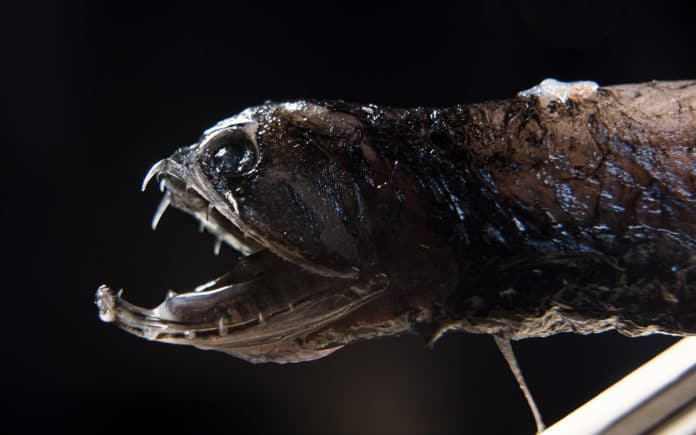The dragon fish is a voracious predator of the deep sea with an arsenal of tools to hunt prey and remain concealed. In contrast to its dark pigmented skin, the dragonfish is equipped with transparent teeth.
Now, scientists at the University of California San Diego have discovered what’s responsible for making the teeth of the deep-sea dragonfish transparent.
Audrey Velasco-Hogan, a materials science Ph.D. student at the UC San Diego Jacobs School of Engineering and first author of the study said, “It’s an adaptation that, to our knowledge, has not yet been explored in detail. By studying why these teeth are transparent, we can better understand deep-sea organisms like the dragonfish and the adaptations they evolved to live in their environments.”
“Transparent teeth, along with a dark body, make the dragonfish essentially invisible to their prey. Because of this camouflage, dragonfish are among the top predators of the deep sea despite being small (measuring about 15 centimeters long) and relatively slow.”
“They spend most of their time sitting around with their jaws open, waiting for something to come by. Their teeth are always exposed, so it’s important that they are transparent so they don’t reflect or scatter any bioluminescent light from the environment.”
To solve the mystery of dragonfish’s transparent teeth, scientists used electron microscopy technique to image and analyze the nanostructure of the teeth. They found that the teeth have unique characteristics both in their outer enamel-like layer and inner dentin layer.
They found the enamel-like layer to consist of nanocrystalline hydroxyapatite domains (∼20 nm grain size) embedded in an amorphous matrix, whereas in the dentin layer the nanocrystalline hydroxyapatite coats nanoscale collagen fibrils forming nanorods. This nanoscale structure is responsible for the much-reduced Rayleigh light scattering, which is further ensured by the sufficiently thin walls.
Velasco-Hogan said, “Typically, teeth are not nanostructured. And they tend to have microscale features such as dentin tubules. From a materials perspective, it’s really interesting to see that dragonfish teeth have architectures that we do not see in others.”
“I also find it fascinating how there are fundamental similarities between materials in the lab and in nature. Experimentally, we know that the way to make a material transparent is by reducing its grain size to make it nanostructured. So to see that is also how nature is accomplishing transparency is an interesting parallel.”
Scientists detailed their findings in a paper published June 5 in the journal Matter.
